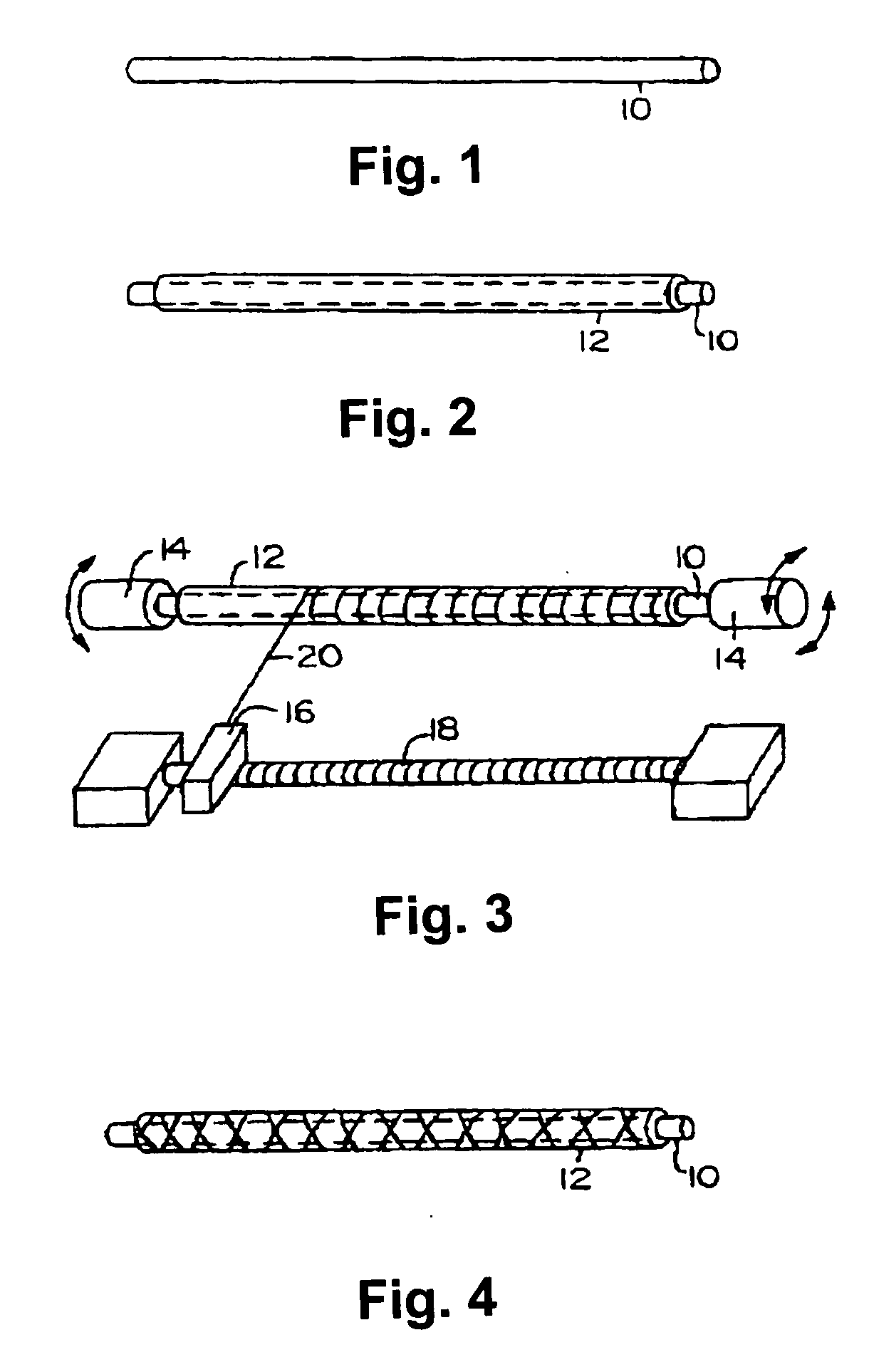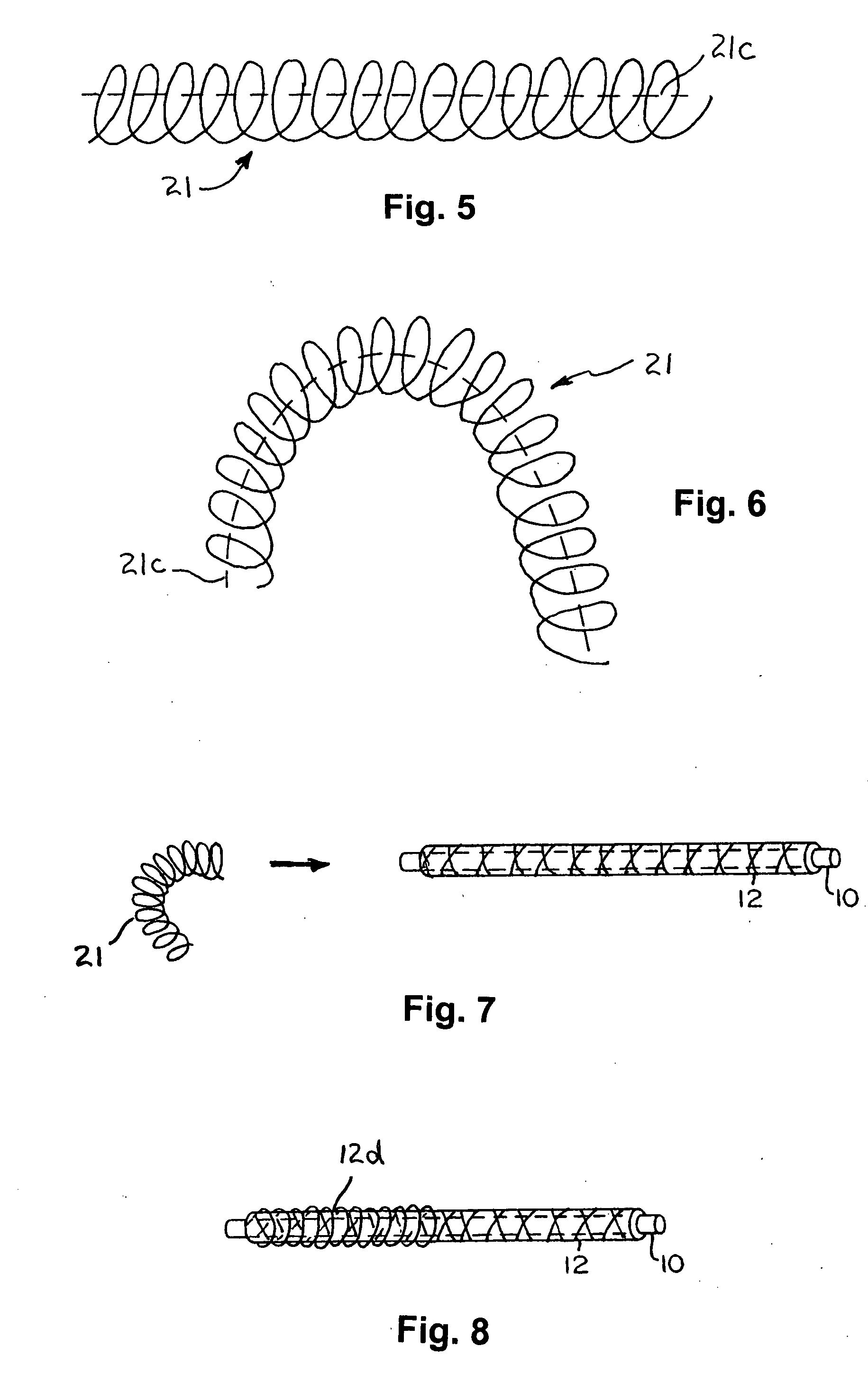Catheter with curved distal end and method of making the same
a catheter and distal end technology, applied in the field of catheters, can solve the problems of difficult to achieve the tight curvature of the catheter, the soft wall of the catheter needed to make the curve shape is often crushed or kinked during use, and the catheter's distal end is curved. , to achieve the effect of tight curvature and small diameter
- Summary
- Abstract
- Description
- Claims
- Application Information
AI Technical Summary
Benefits of technology
Problems solved by technology
Method used
Image
Examples
Embodiment Construction
[0030] A catheter C having a curved distal end portion and a method of making the same according to the present invention will be described in detail hereinafter with reference to FIGS. 1 to 11 of the accompanying drawings.
[0031] The method of making a catheter C starts with a core mandrel 10, as shown in FIG. 1. The catheter C will be constructed over the core mandrel 10 using much of the same technology disclosed in the Applicant's prior U.S. Pat. No. 6,030,371, which is incorporated herein by reference.
[0032] A catheter liner 12 is placed over the core mandrel 10, as shown in FIG. 2. The liner 12 can be formed of a variety of different materials but is generally less than 20% of the intended wall thickness. As an example, a liner having a 0.00150 inch wall thickness of TFE can be used. Alternatively, the process of the present invention can be performed without a liner, whereby a polymer material is applied directly on the mandrel 10.
[0033] A reinforcement filament 20 is then ...
PUM
 Login to View More
Login to View More Abstract
Description
Claims
Application Information
 Login to View More
Login to View More - R&D
- Intellectual Property
- Life Sciences
- Materials
- Tech Scout
- Unparalleled Data Quality
- Higher Quality Content
- 60% Fewer Hallucinations
Browse by: Latest US Patents, China's latest patents, Technical Efficacy Thesaurus, Application Domain, Technology Topic, Popular Technical Reports.
© 2025 PatSnap. All rights reserved.Legal|Privacy policy|Modern Slavery Act Transparency Statement|Sitemap|About US| Contact US: help@patsnap.com



